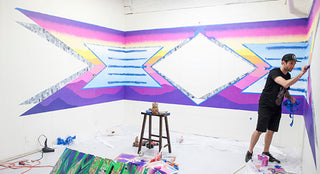Like the gravity of the universe, Adam Friedman’s work has a pull that’s impossible to escape. I first met the artist a couple years ago through the gallery I was working for at the time. He was contributing to an installation with Robert Minervini for a show curated by a mutual friend, Sven Davis. Adam was working, day and night, adding layer after layer. It was the first time I saw someone wrap the hang wire around the screw holding up the work. He explained that the works were small, and that since the gallery was in the Tenderloin, it’s better to go the extra mile so it doesn’t walk off in someone’s coat. I had a feeling at the time that Adam must apply the same little details of his work and installations into his daily life.
With his recent exhibition “INTO THE AETHER” at Mirus Gallery in Downtown San Francisco coming to an end this week, I thought it would be the perfect time to catch up with Adam and pick his brain about his influences, the universe, and the world within his art.
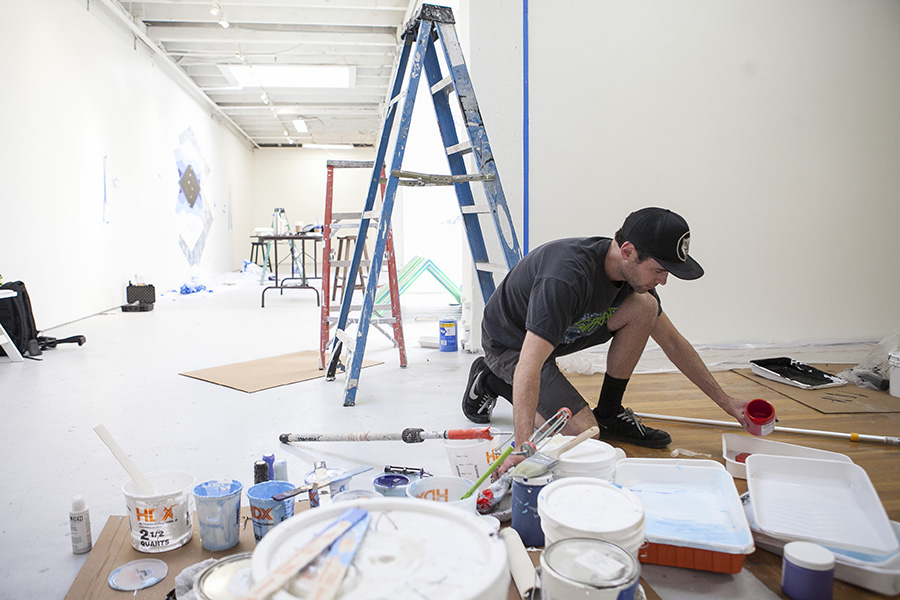
“I’M INTRIGUED BY WHERE SCIENCE—SPECIFICALLY PHYSICS—AND PHILOSOPHY COLLIDE.”
Brock Brake: What influences you to make the body of work you do?
Adam Friedman: I draw influences from so many different places. Life experiences, travel, camping, adventure, struggle, success, love, conflict, music, art, literature, science, philosophy, etc. All of these broad topics are what inspire me to make work… But I guess there are different types of influences that affect how my work presents itself; technical and conceptual.
Conceptually, I’m intrigued by where science (specifically physics) and philosophy collide. I’m interested in the narrative we’ve created for our comprehension of the world and universe around us, the limits of knowledge, and what it means to really “understand” anything (and if that’s even possible). I’m obsessed with multiverse theories and inspired by writers, thinkers, and artists that question reality and offer up alternative viewpoints on existence, especially when those ideas are non human centric.
Technically, I’m influenced by other artists—how they’ve handled materials and communicated ideas visually. I love the romantic landscape painters of the Hudson River School. I’ve always been really drawn to Futurist painters like Boccioni and Severini, and Surrealist artists like Max Ernst and Yves Tanguy. Love me some MC Escher and Paul Noble. A lot of the modern and contemporary artists I’m drawn to make work that doesn’t really look anything like mine. Donald Judd, early Frank Stella. Lately been really into the work of Thaddeus Wolfe, Gregory Hodge, Katharine Gross, Henrique Oliveira…. There are too many insanely inspirational artists out there to name. Music plays a huge part of my everyday studio practice, but I won’t even go down that rabbit hole right now [laughs].
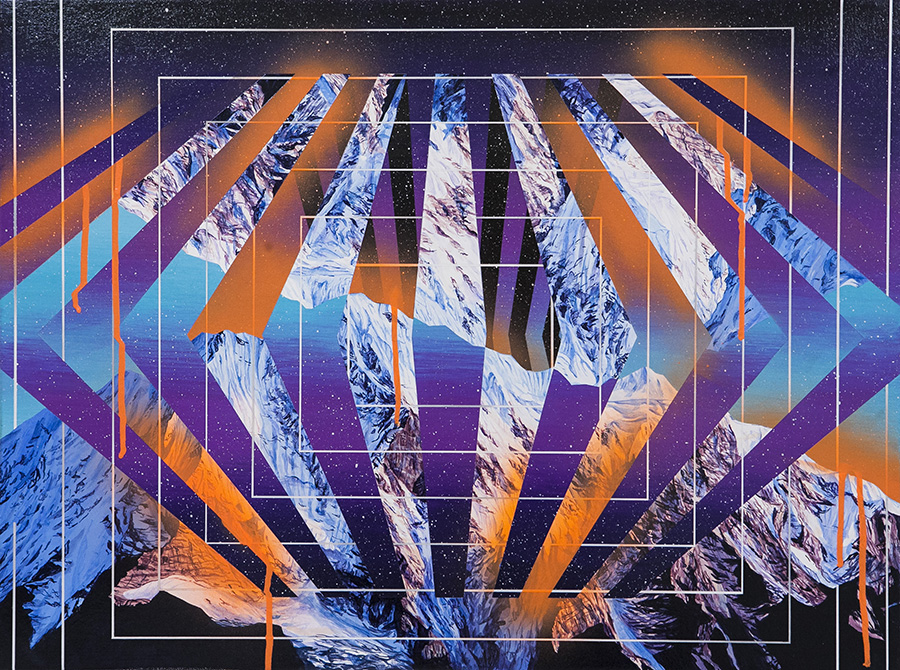
For those who don’t know: What made you decide to go to art school?
Going to grad school at SFAI was definitely an impulse decision. I studied printmaking in undergrad and really just wanted to continue working and have nice facilities. I went to undergrad at the University of Oregon in Eugene. Not exactly an art hub… so I wanted to immerse myself in a big city with exciting art all over the place. SF has always been one of my favorites, so I went. Honestly, I was dumb and didn’t really even consider how the loans would affect my life thereafter. I just wanted to keep focused on art. When I got to grad school, I realized that I was in way over my head. I was one of the youngest people in my class by at least a few years. Most of my peers took at least a few years after their undergrad before committing to grad school, but I went straight in. I had no idea what I wanted to do and really struggled at first. I finally figured it out about 3/4 of the way through school… It’s hard to say if art school was worth the insanely high cost, but I wouldn’t take it back. I met so many rad artists (teachers and students alike), and it definitely gave me some perspective.
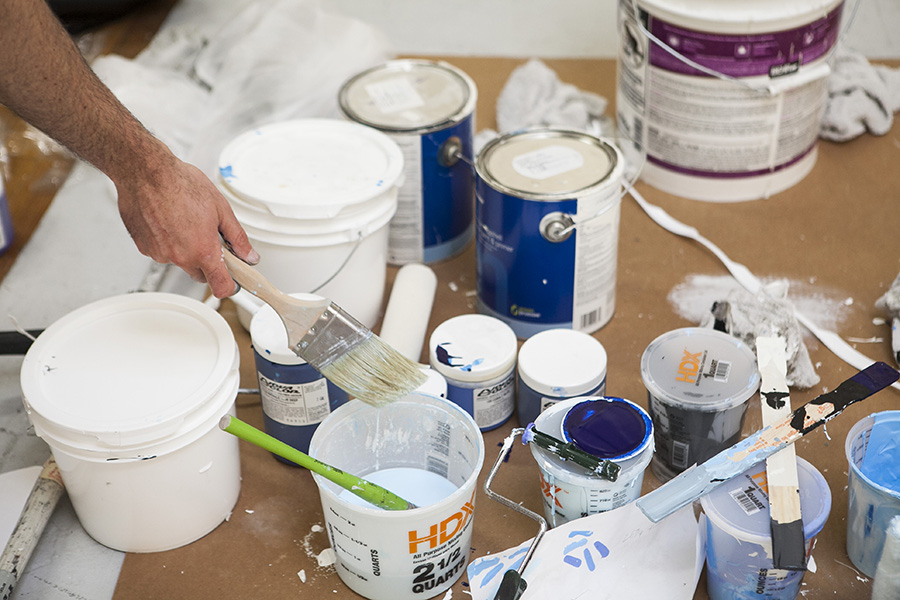
Did you ever have a mentor in school or after?
I worked with a handful of really cool teachers/artists at SFAI, but probably the closest with a painter by the name of Brett Reichmann. He has a reputation for being really blunt and harsh in his crit seminars, but he doesn’t do so in a mean or irrational way. If you’re not working hard enough or something isn’t working for ya, he’ll tell you without any sugar coating. I had a crit seminar with him and was convinced that he hated me. I would get pretty torn up every time I’d put my work in front of the group. But at the end of the semester he asked me to be his TA. He’d stop by my studio here and there outside of regular class hours and always had good feedback. We still keep in touch and try to link up when I’m in SF. Haven’t really had any mentors since I moved up to Portland, but I have linked up with a handful of peers that are pretty well established up there, so that has been helpful.
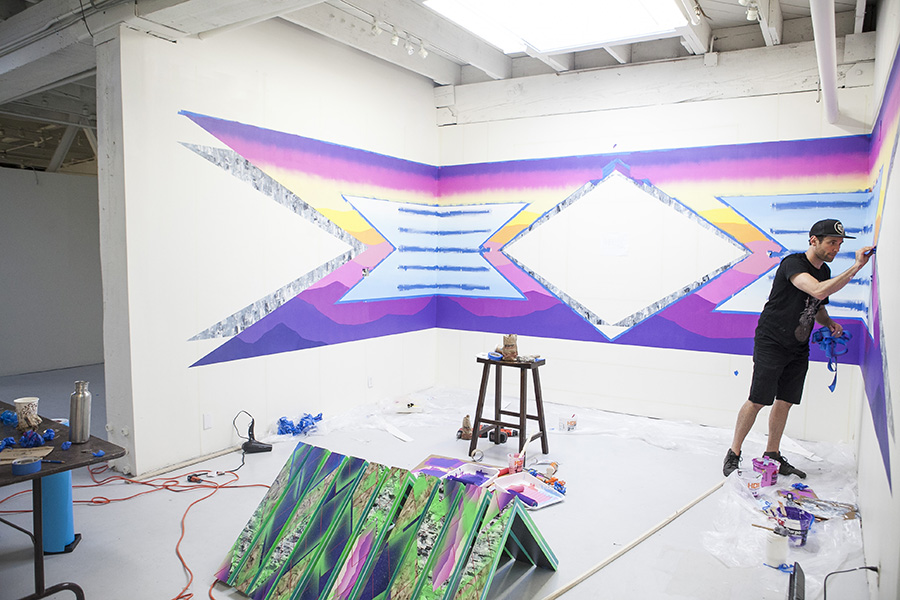
It seems like a handful of years ago there were so many more process layers to your work. Since moving North it seems like you started to simplify and break down the build up. What can you attribute this to?
As I mentioned above, I studied printmaking for my BFA. I had a really traditionally trained professor. She was amazing, but I always kinda wanted to push the boundaries. I’d make these mixed media prints that couldn’t necessarily be editioned. When I got to grad school, the work just naturally evolved and I started collaging prints onto panels and eventually painting back into the images to bring the to life a bit more. I was incorporating so many techniques… screen printing, monotype, etching, painting, collage, etc. But I also had the facilities at my disposal to do so. After grad school, I had a studio at Root Division in SF and helped them to get their screen printing facilities working consistently. But since I didn’t have access to a full printmaking studio any longer, painting worked its way back into my process more and more until in eventually took over.
I still approach paintings very technically and process minded (like a printmaker). Everything happens in layers, but it is a blend of precision and letting things happen naturally/accidentally. I still use some of the collage techniques, but all of my materials are acrylic paint. In other words, I’ll paint on other surfaces, peel up the paint and glue it down to a painting with gel medium… but its all acrylic paint. I love painting because its way more of a struggle than printmaking. In printmaking I had a pretty clear idea as to what something would look like. But I typically have no idea what a finished painting will look like. The piece reveals itself as I layer and layer paint and images. I’ll often overwork something, then have to bring it back to life. I never give up on a painting. I’ve also been making more and more 3D paintings. They are sculptural, but I definitely see them as paintings. They’re fun because I get to work in another format (wood shop). I pride myself on my craftsmanship, so these objects give me the opportunity to focus on that sometimes and help to create a more immersive installation/show.
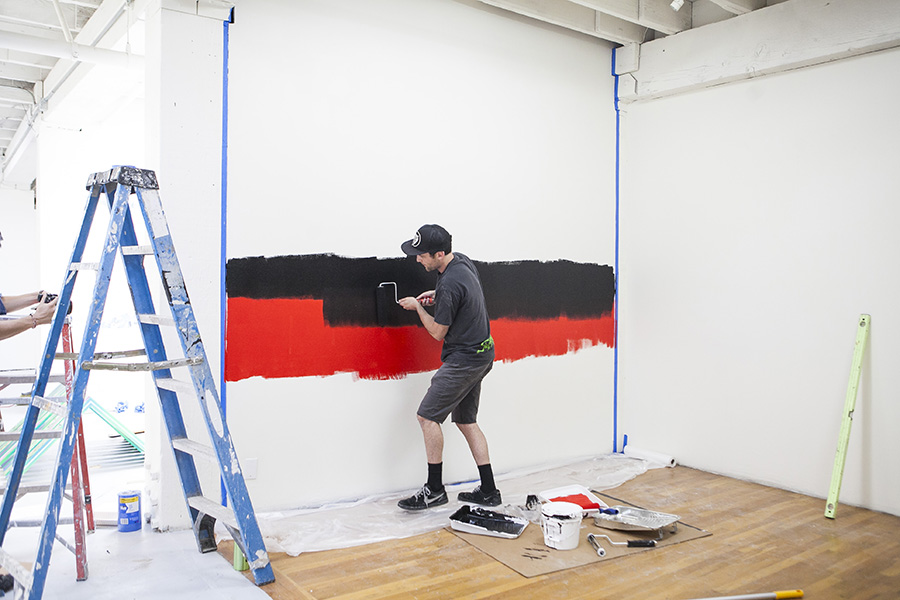
“MOST OF MY PIECES ARE TITLED AFTER DIRECT QUOTES FROM MY READING.”
What are some of the most interesting books you’ve picked up recently that have to do with the research you do?
Reading is a HUGE part of my process. I really learned the importance of researching my ideas in grad school. It keeps me full of inspiration and never wondering what to deal with next. I’m not necessarily good with words, but a good writer can say something so profound in a few words and it blows me away. My all time hero is the late Edward Abbey. Most of my pieces are titled after direct quotes from my reading. The books that influenced my recent show at Mirus Gallery were:
The Beginning of Infinity by David Deutsch
The Accidental Universe by Alan Lightman
The Island of Knowledge: The Limits of Science and the Search for Meaning by Marcelo Gleiser
On the Plurality of Worlds by David Lewis
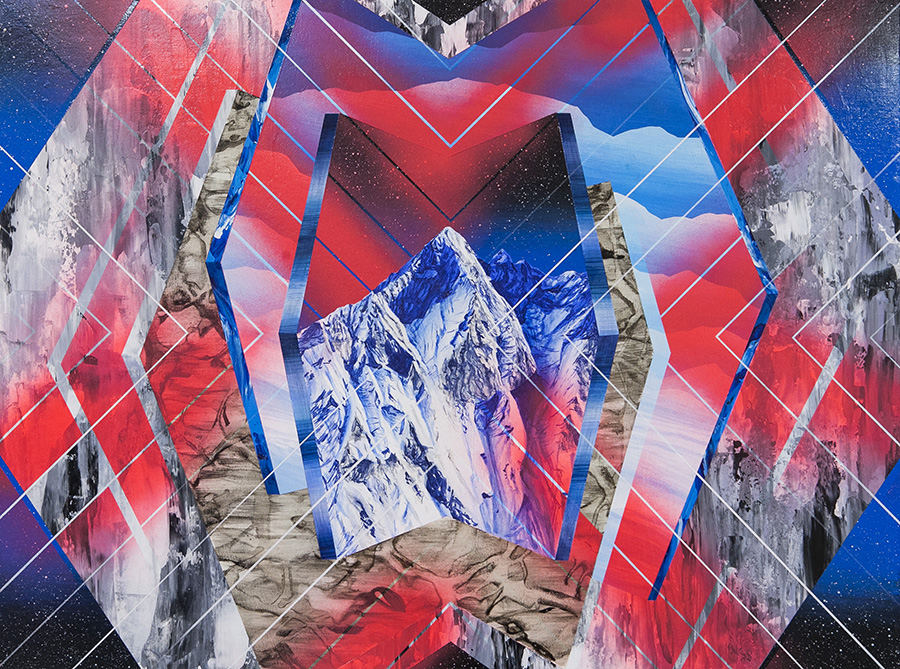
How would you explain a galaxy to someone who’ve never done the research?
Well, a galaxy is generally defined as a system of stars, gases, stellar remnants, and other things we don’t truly understand like dark matter and energy. Our solar system is a spec within our galaxy and there are said to be almost 200 billion galaxies in the observable universe. So if we do exist in a type of multiverse, there could be an infinite amount of them. I think it’s important to recognize that scientific explanations are just that…. explanations. If a current explanation cannot be disproven, then that theory is held as knowledge/understanding. But that doesn’t make it a fact. Throughout history, science has had these “facts” disproven over and over again. Our entire understanding of the universe around us is based on Einstein’s theory of relativity (basically, nothing moves faster than the speed of light). It’ll sure be an exciting time when and if humans are able to prove that one wrong.
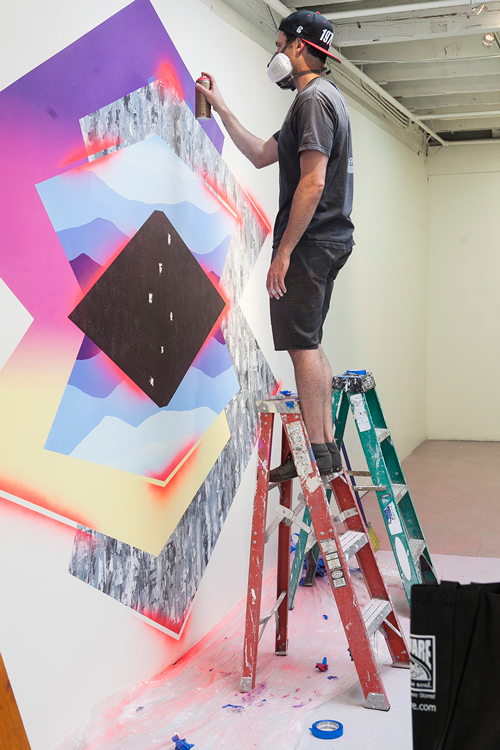
How do you pay the bills? Any side jobs?
For years I’ve worked part time in non profit arts administration. But I recently took the plunge to full time professional artist weirdo. I teach a college class here and there, but I really enjoy it. Partially because I don’t have to depend on teaching, so I don’t get burnt out. Going full time in the studio is kinda scary, but I figured I had to take the plunge at some point. Projects have been lining up lately, so I honestly just got too busy to handle everything (job, studio, life, friends, relationship, etc). I felt like if I gave one thing enough attention, everything else would suffer. So hopefully this will help to balance out my life a bit more as well. I figure that if shit hits the fan, I can always pick up random gigs. But I’ve been doing some really fun commercial projects and commissions. Its been a great experience because I’ve had full creative freedom! I’ve also realized that its just not realistic to think I’m going to make a living solely of painting sales… So I’ve been trying to be more creative and get my work out there in different ways.
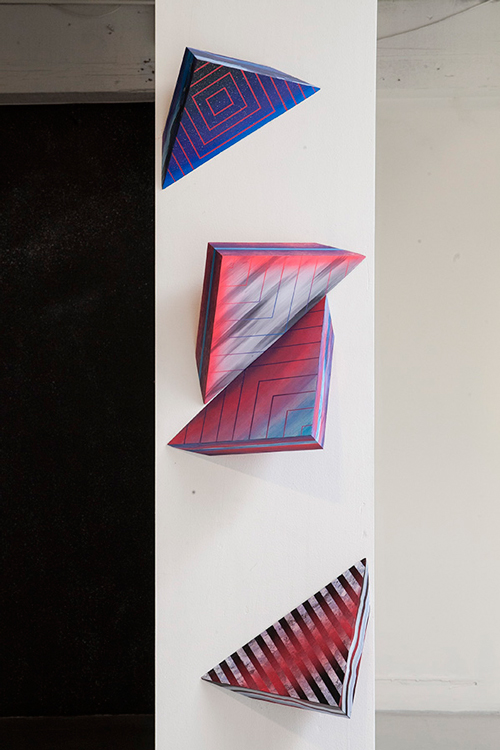
You’re a fan of motorcycles and other things that go fast? Does this effect what you decide to make and focus on?
Honestly, motorcycles are more of an escape for me. I’m admittedly an adrenaline junky, but I also gravitate towards the technical and precise (music, my studio practice, etc). Motorcycles are an extreme version of that. Not only how they are built, but riding them as well. There’s a fine line between life and death, so the better you understand the technical side of things. It’s a rush, I won’t deny that. But riding and working on bikes really helps to clear my head. I feel like all of my projects have some sort of end goal or professional purpose, with a degree of pressure. Working on motorcycles has become a pressure free project for me with the only end goal to ride the thing fast as hell! I love to surf, snowboard, hike, cliff jump, ride bikes, etc… But motorcycles are really efficient. I can take a 40 minute break from the studio, ride out my garage to some twisty country roads nearby, and come back with a big smile and ready to get back to work.
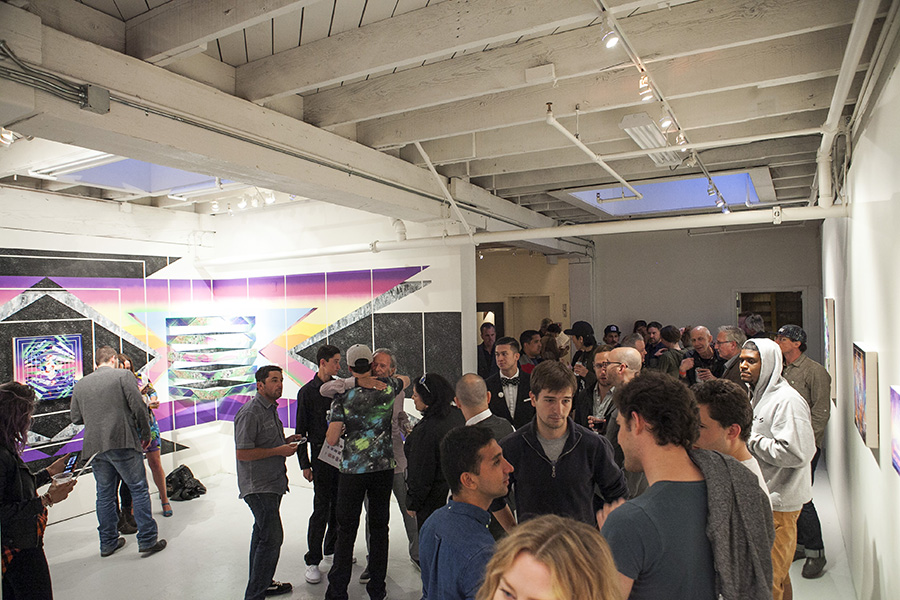
What draws you to the colors you work with?
For the current body of work and subsequent show at Mirus Gallery… I was trying to give the work and viewers a perspective of nature and the cosmos that diverges from how we are used to seeing it. Using a bright and sometimes synthetic color pallet helps of work push into the zone of the “unreal.” Rather than veer into complete abstraction, I use tropes that we understand as nature (mountains, stars, sunsets, etc). But the bright colors and patterning make the spaces less easily approachable and hopefully force the viewer to question their place within the universe/reality. Honestly, its easy for me to get a little carried away with color, but I decided to embrace it for this body or work/show. I has an artist friend named Damien Gilley over at the studio recently and he was talking about how its often more difficult to use less color than more. This stuck with me to whole time I was making the work, even thought I went pretty extreme with the pallet. [Laughs] Sorry, Damien.
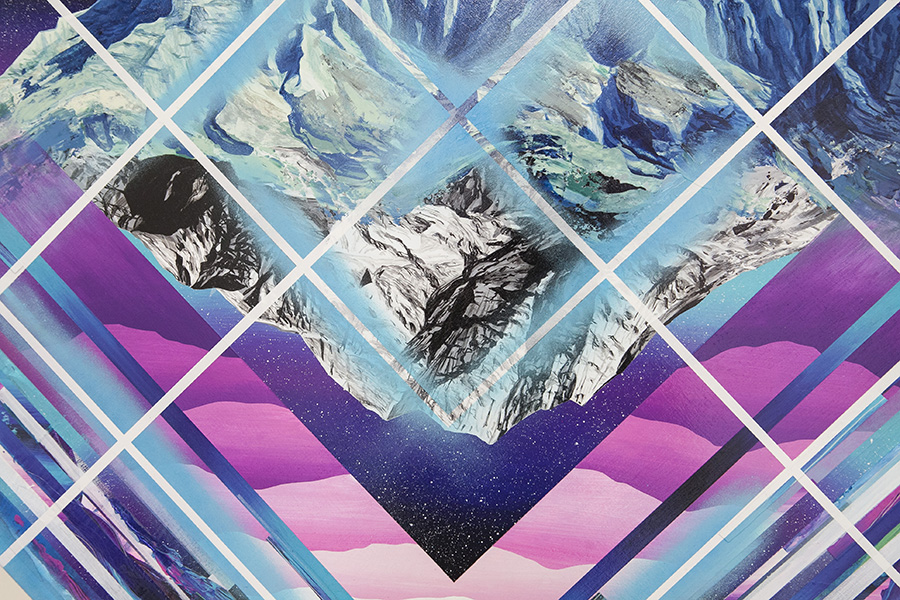
With your exhibition “INTO THE AETHER” ending soon, what direction do you see your work going? Any new focuses or concept ideas?
For every show, I try to create a more immersive installation. The mural and sculptural elements really help to do this because the viewer can move through the space in a different way. I’m really interested in expanding on the sculptural pieces by making them larger and more technical. I’d love the opportunity to create some out door murals as I’ve only done them inside, in the gallery context. As far as the paintings go, “Into the Aether” was definitely a big evolution for me conceptually, but almost even more so technically. I feel like through loosening up and letting go of some control, I was able to learn so much about painting. I’m definitely going to push more into that and see what more I can learn and how I can continue to progress as an artist.
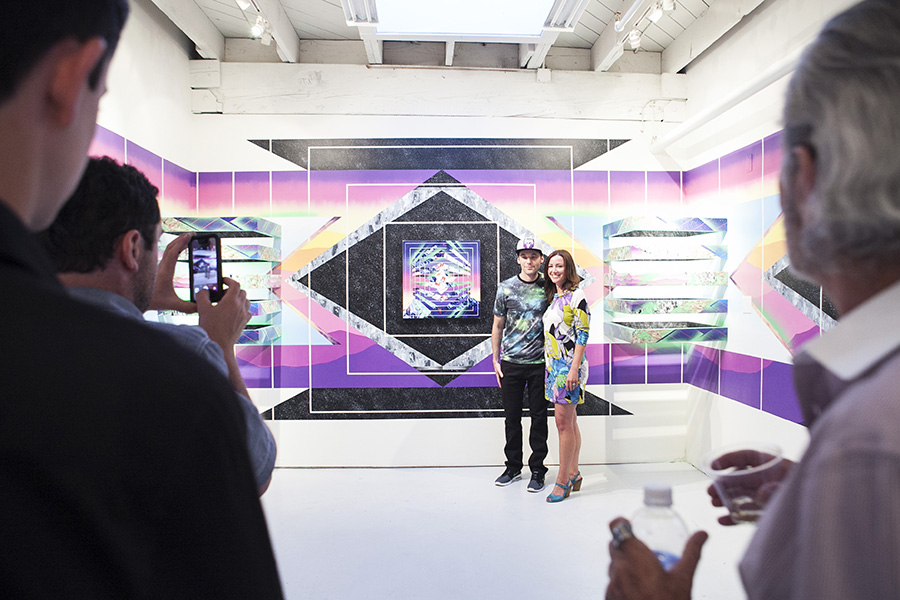
::
See Adam Friedman’s show “INTO THE AETHER” before it ends tomorrow at Mirus Gallery in San Francisco.

